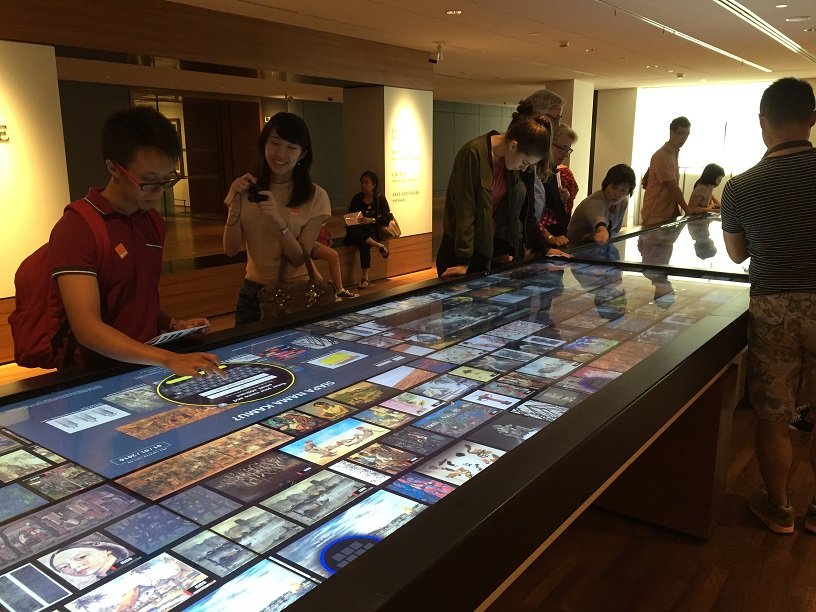Interactive digital display systems refer to computer-delivered electronic systems that enable users to control, combine, and manipulate various types of media, including text, sound, video, computer graphics, and animation. These systems are designed to engage users by providing interactive experiences through visual and tactile interactions.
The scope of interactive digital display systems is quite extensive and encompasses various domains and applications. Here are some key areas where these systems are commonly utilized:
- Education
Interactive digital display systems are increasingly being adopted in educational settings to enhance teaching and learning experiences. These systems offer features such as touch interactivity, multi-user collaboration, and multimedia integration, allowing teachers and students to interact with educational content in dynamic ways. They can replace traditional whiteboards and projectors, enabling more engaging and interactive lessons. - Entertainment
Interactive digital display systems play a vital role in the entertainment industry. They are used in video games, virtual reality (VR), and augmented reality (AR) applications, providing immersive and interactive experiences to users. These systems enable users to control and manipulate virtual environments, objects, and characters in real time, blurring the line between the digital and physical worlds. - Retail and Advertising
Interactive digital displays are utilized in retail environments to create engaging and interactive shopping experiences. They can showcase product information, offer interactive product demonstrations, and provide personalized recommendations. In advertising, interactive displays attract attention, increase customer engagement, and allow for interactive marketing campaigns. - Museums and Exhibitions
Interactive digital displays are widely employed in museums and exhibitions to provide visitors with informative and interactive experiences. They can present multimedia content, interactive maps, virtual tours, and simulations, enhancing visitors’ understanding and engagement with the exhibits. - Collaborative Workspaces
Interactive digital displays are utilized in collaborative work environments, such as boardrooms and conference rooms. These displays enable multiple users to interact simultaneously, fostering collaboration and idea sharing. They often include features like annotation tools, wireless connectivity, and integration with other collaborative software. - Public Spaces and Wayfinding
Interactive digital displays are used in public spaces, transportation hubs, and shopping centers to provide information, directions, and interactive maps. Users can navigate through complex environments, access relevant information, and engage with interactive content, enhancing their overall experience.
It’s worth noting that the scope of interactive digital display systems is continuously evolving, driven by advancements in technology and user expectations. As technology progresses, we can expect to see further integration of artificial intelligence, gesture recognition, haptic feedback, and other interactive elements, leading to even more immersive and interactive experiences.

